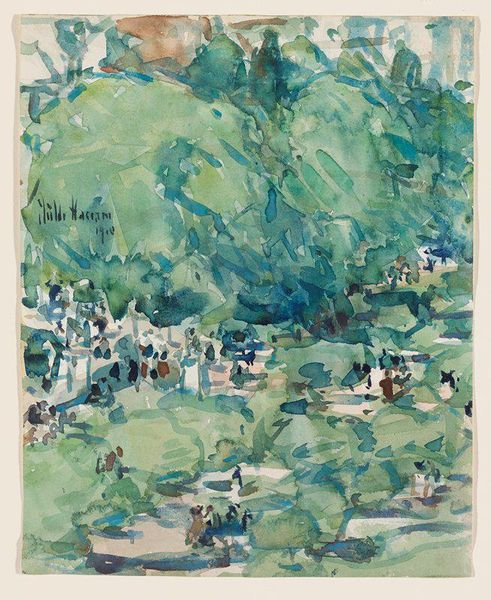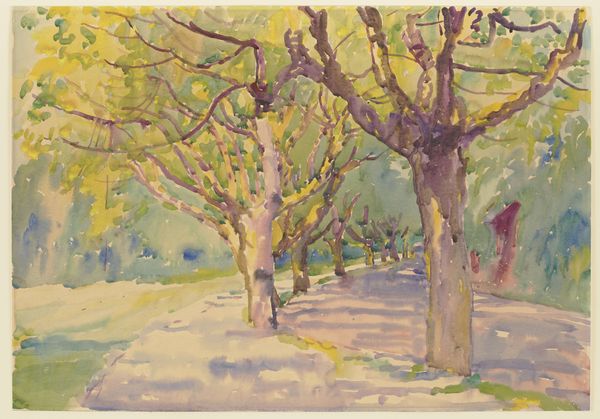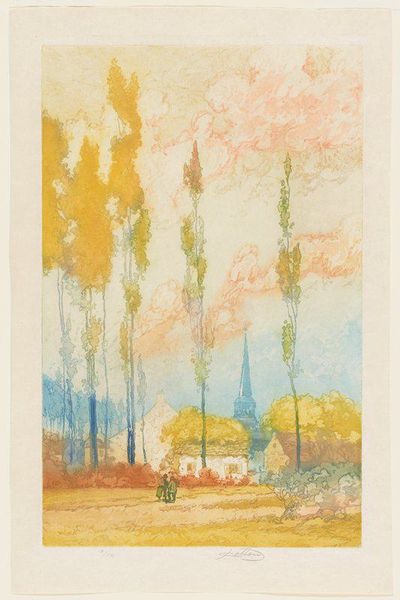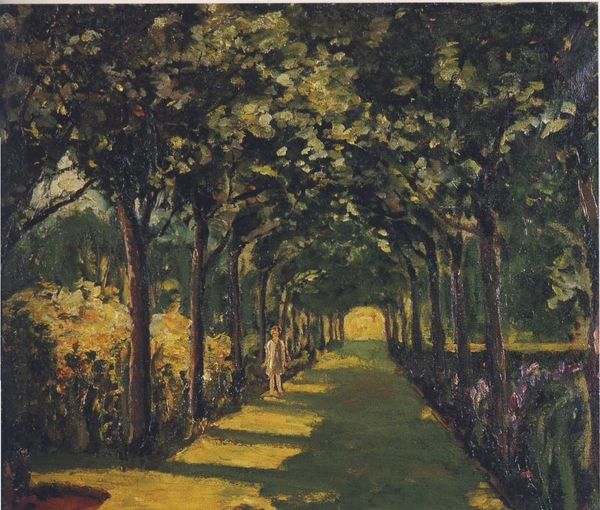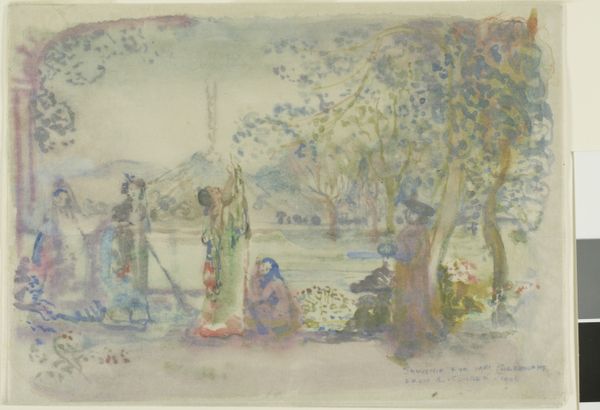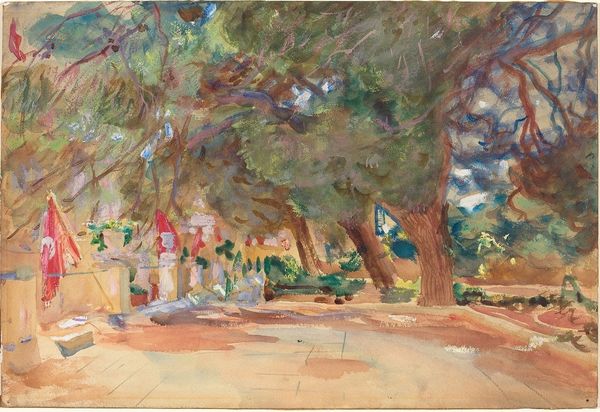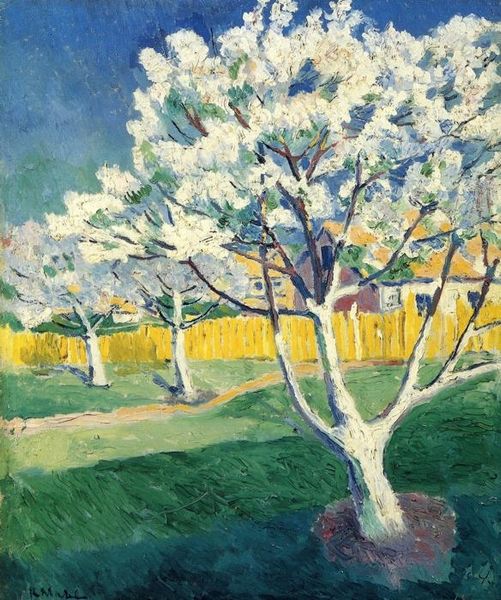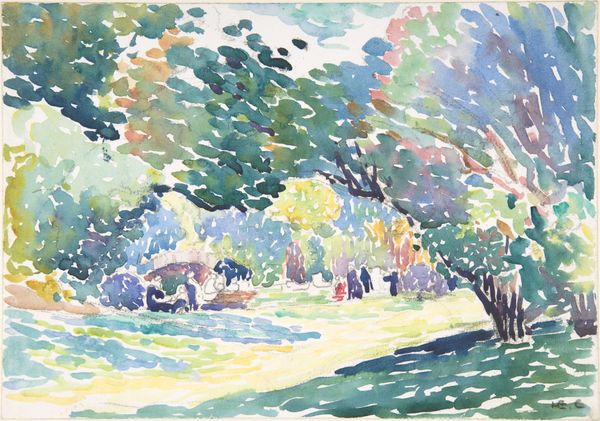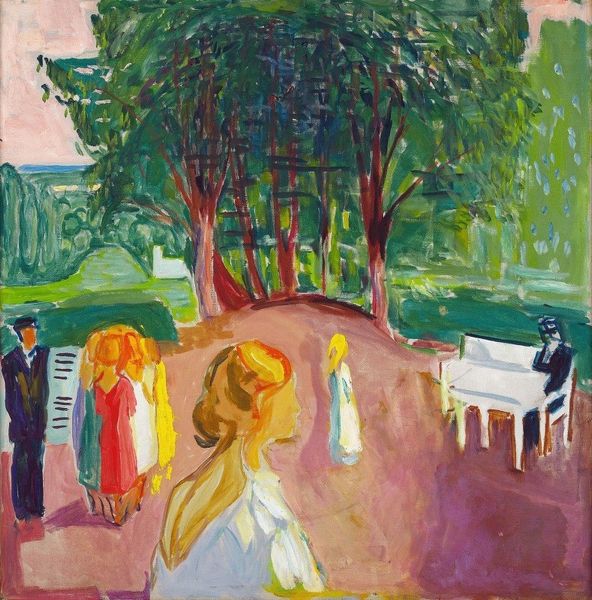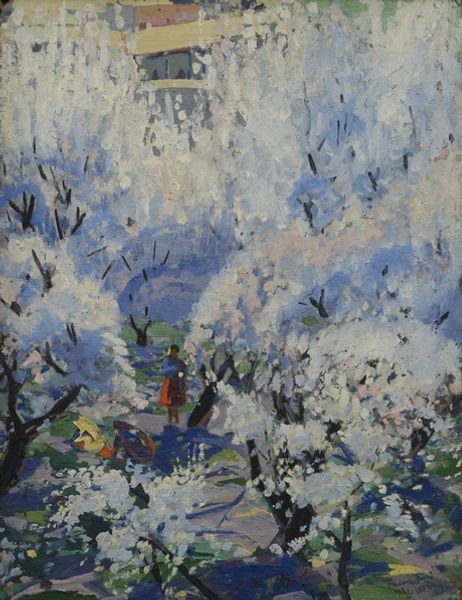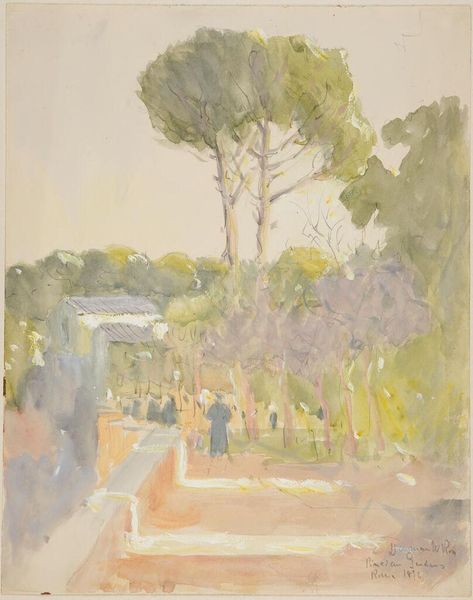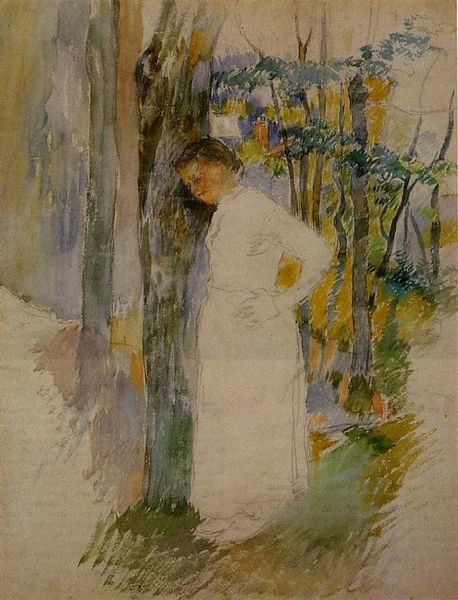
Dimensions 11 1/2 × 8 5/16 in. (29.21 × 21.11 cm) (image)15 × 9 7/8 in. (38.1 × 25.08 cm) (sheet)
Curator: What a serene atmosphere! It's all so delicate, like a memory fading at the edges. Editor: Indeed. We’re looking at Arnošt Hofbauer's "Roztocka Alley," crafted around 1910. It's a watercolor and print work currently held at the Minneapolis Institute of Art. Hofbauer has captured a park scene, seemingly en plein air. The impressionistic style is evident. Curator: The dappled light… It almost completely fractures form. And yet the composition itself maintains a clear sense of receding space. The figures lead us into a deep background in an intentional recession of perspective. Editor: Let's consider the iconography here. Parks have long been spaces for social interaction, display, and recreation. The figures, while vaguely rendered, suggest an elegant bourgeoisie, leisurely strolling. What narratives can we extract from the symbolism of an "alley"? Is it a passageway, a stage? Curator: It's tempting to over-read that "alley" metaphor, although Hofbauer's manipulation of color creates localized intensities that vibrate. Note the interplay of blue, green, and rose that seems to evoke specific moments of contact that may lead the eye of the viewer deeper into the piece. Editor: Those touches of rose in the figures are visually arresting! And even though the figures are gently blurred in an artistic interpretation of how we exist as subjects in spaces of our environment, their clothing implies societal roles and norms for 1910s urban life. Curator: He utilizes watercolor expertly to render the light with a vibrating touch. It's hard to separate that technique from the subject as far as effect on the viewer goes. The marks give energy. Editor: A pastoral scene that seems to ask us what narratives can be discerned through symbols we encounter in this world around us. It certainly presents itself as an elegant slice of turn-of-the-century urban life. Curator: An astute application of visual strategies with simple marks on a surface. Thank you for decoding it from the symbolist end, it’s really expanded my way of interpreting its value. Editor: The pleasure was all mine. Examining that interplay of representation and intention really brings the painting to life.
Comments
The gauzy atmosphere suggests an Impressionist painting, but this work by Arnošt Hofbauer is a woodcut. It satisfies two concerns facing Czech artists around 1910: how to reflect the national culture and be modern. While the woodcut medium harks back to the Slavic tradition of craft work, a complicated woodcut depicting modern life would have been quite new. Roztocka Alley was in Hofbauer’s hometown of Prague, still one of the world’s most beautiful cities in which to stroll. The diluted colors, dominated by shades of violet, add to the scene’s buoyant mood. Hofbauer invented his red chop mark, modeled on the Japanese signature stamp, after seeing Japanese prints in Paris in 1900.
Join the conversation
Join millions of artists and users on Artera today and experience the ultimate creative platform.

